45+ Quick E-Commerce Wins: How to Skyrocket Your Online Sales Fast
E-commerce can feel like a grind. Launching an online store takes a massive amount of work. You need to source products, build a website, configure shipping logistics, and that's just the beginning. But business doesn't have to be a slow, plodding process. With some clever strategies, you can score some quick e-commerce wins to gain momentum fast.
In this post, we'll explore actionable tactics for rapidly increasing your online sales. While long-term success requires perseverance and commitment, you can enjoy some short-term victories to get the momentum rolling. Let's dive in!
Table of Contents
1 – Optimise Your Site for Conversions
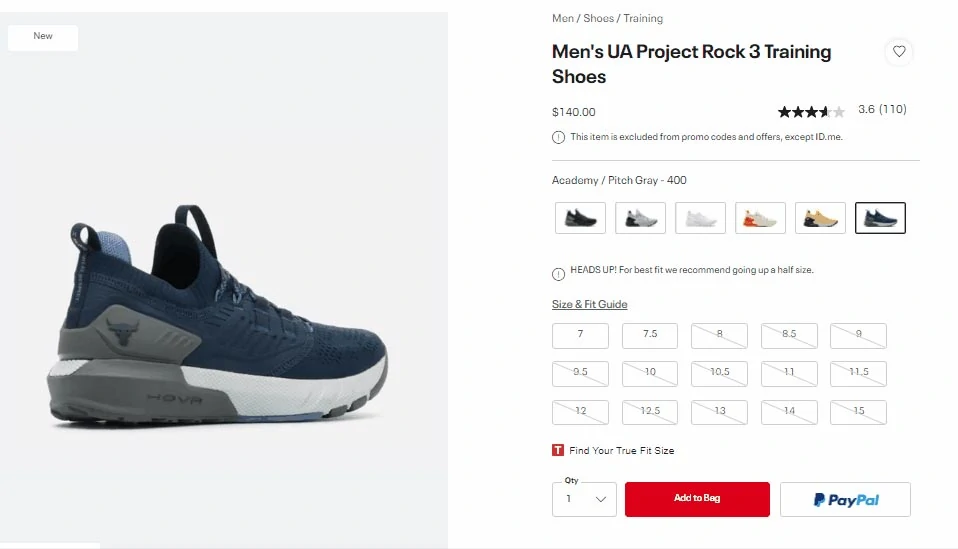
Your website is the heart of your e-commerce operation. If your site isn't primed for conversions, nothing else matters. Take the time to optimise your site for higher conversion rates before driving traffic to it.
Load Speed
Site speed is a conversion killer. If your site takes over two seconds to load, you're haemorrhaging customers. Use a tool like Pingdom or Google PageSpeed Insights to test your load time. Anything over two seconds needs improvement.
Switch to a faster web host, enable caching plugins, compress images, and minimise HTTP requests. Every 100-millisecond improvement in load speed increases conversions by 1%.
Mobile Responsiveness
Over 60% of e-commerce traffic comes from mobile devices. If your site isn't mobile-friendly, you're destroying conversions. Use Google's Mobile-Friendly Test to check your site.
Implement a responsive design, increase tap targets to at least 44px, and check that elements load correctly on mobile. Going responsive gives an instant sales lift.
Page Speed Optimisations
Your website copy also impacts conversions. Use short sentences, break up paragraphs, and avoid walls of text. Remove clutter and minimise PDF downloads. Prioritise your value proposition and calls-to-action (CTAs) so they catch the eye.
Every page should have a single goal. Remove distractions and highlight your CTAs. Speed up page load time by optimising images and removing unnecessary plugins. Fast, focused pages convert.
2 – Retarget Website Visitors
Retargeting warms up cold traffic by keeping your brand in mind. Set up Facebook and Google remarketing ads targeting visitors who left your site. Stay in front of potential customers instead of disappearing after their first visit.
Remarketing ads don't feel overly promotional because they're about unfinished business. Someone visited your site, which indicates initial interest. Follow up with an ad reminding them to complete the purchase.
Even if someone isn't ready to buy on their first visit, retargeting keeps you on their radar. According to AdRoll, retargeted prospects are 70% more likely to convert. Help people remember you and keep your brand relevant.
3 – Offer Free Shipping
Free shipping is like crack for e-commerce shoppers. Online consumers have an unhealthy obsession with getting free delivery. Use this to your advantage by offering free shipping to increase conversion rates.
According to UPS, 73% of customers prioritise shipping costs over speed. Free shipping gives you an instant edge since competitors like Amazon offer it. Eat the shipping costs or increase your product prices to cover them.
Shoppers place a ridiculously high value on free delivery. Our brains perceive ‘free' as a deep discount, even when the shipping costs are built into product prices. Split test free shipping and watch your conversions climb.
4 – Add Trust Symbols

First-time visitors don't know or trust your brand. Alleviate concerns by adding trust symbols to your site. Features like secure checkout badges, money-back guarantees, and customer testimonials increase perceived trustworthiness.
When people trust you, they're much more likely to buy. Display security seals from providers like McAfee to reassure visitors that their data is safe. Include testimonials from genuine customers describing great experiences with your company.
A 30-day return policy also reduces barriers to purchase. If people know they can quickly get a refund, they'll feel more comfortable buying. Reduce risk for customers so they leap.
5 – Offer Limited-Time Discounts
Scarcity spurs action. If you struggle to get sales, offer limited-time discounts to create urgency. For example, give 20% off all orders this weekend only. The ticking clock pressures customers to buy before they “miss out”.
Time-sensitive discounts also make people pay attention to your brand when they otherwise wouldn't. Canny manipulators like Groupon build their business on scarcity marketing. The fear of missing a short-term deal causes impulse purchases.
Occasional flash sales and holiday discounts also bring in business. But use them sparingly to avoid conditioning buyers to wait for deals. Strategic urgency prompts otherwise passive visitors to engage.
6 – Collect Emails and Retain Customers
Email marketing has one of the highest ROIs of any marketing channel. Yet, most businesses fail to capture emails at checkout. Don't leave this money on the table. Entice customers to join your email list during purchase.
Send follow-up emails after a sale with order confirmations and shipping notifications—reward initial loyalty with a coupon for their next purchase. Email buyers periodically with deals and content offers to keep your brand top of mind.
Email is also crucial for winning back lapsed customers. Segment your list to target buyers who haven't purchased recently. Offer them an immediate discount to re-engage them.
Building an email list accelerates growth by retaining existing customers. Keep in touch after the first sale. Continue nurturing leads into loyal brand advocates.
7 – Optimise Your Checkout Process
A confusing, tedious checkout process kills conversions. After someone decides to buy from you, remove all friction during checkout. Keep forms short with clear messaging to get customers to the thank you page ASAP.
Allow guest checkouts so people don't have to create accounts to make a purchase—auto-populate forms with data from the previous page to prevent retyping. Offer multiple payment options like PayPal to keep things moving.
Confirmation pages are also conversion goldmines. After completing a purchase, customers are primed for upsells and cross-sells. Offer additional products and services to increase order value.
Checkout is the hard part. Guide customers through a quick, simple process. The easier you make purchasing, the more people will buy from you.
8 – Advertise on Facebook
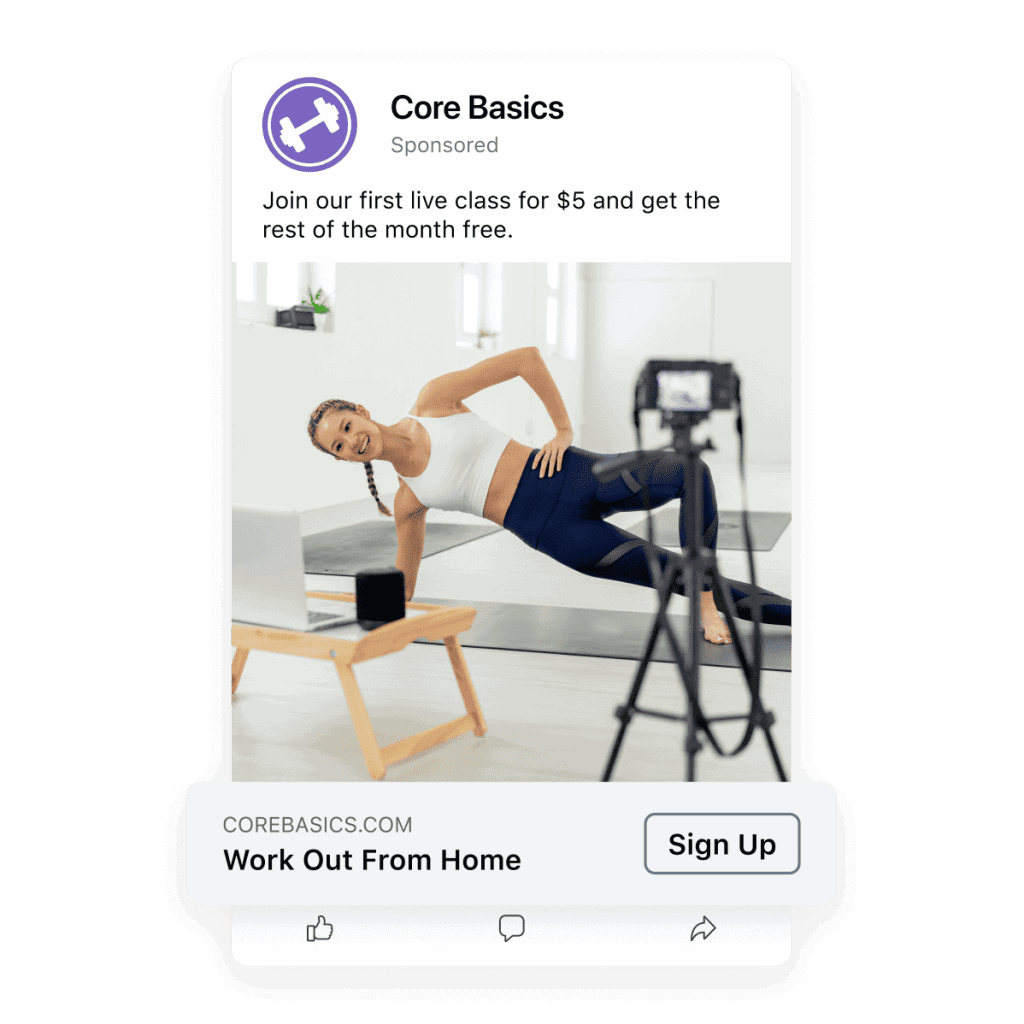
With over 2 billion monthly active users, Facebook remains the king of digital advertising. Despite rising costs, Facebook still offers the highest ROI for most e-commerce stores. Start with a solid foundational budget to scale up results.
Target interest-based audiences instead of spraying ads at everyone. For example, target people interested in yoga, marathons, and fitness if you sell athletic apparel. Narrow down your audience to people likely to buy.
Create ads showcasing your products or special offers. Video ads perform exceptionally well on Facebook. Leverage the power of its AI-powered optimisation tools to split test ads and find high-performing variants.
Finally, retarget people who engage with your ads to capitalise on existing interests. Smart Facebook advertising combines precise targeting with advanced optimisation for the best results.
9 – Promote on Instagram
Instagram and Facebook advertising go hand-in-hand. With over a billion active users, the highly visual nature of Instagram also makes it ideal for e-commerce brands. Promote your products where people already obsess over images.
Post attractive photos of your products and tag them so people can easily shop. Use relevant hashtags like #makeupaddict or #sneakerhead to reach engaged communities. Influencer marketing can also expand your audience on Instagram.
Partner with relevant creators to get your products in front of their followers. Or repost user-generated content of people enjoying your products. Instagram Stories ads let you reach buyers as they mindlessly scroll the app.
Drive traffic to your store, promote new arrivals, and run giveaways and contests to engage customers. Instagram offers a thriving platform to market your goods visually.
10 – Review Your Analytics
Analytics provide the roadmap to quick wins. Review your Google Analytics and Facebook Business Manager data to identify high-impact optimisation opportunities. Analyse your sales funnel to pinpoint leakages stunting revenue growth.
Which pages have the highest exit rates? Why are people abandoning their carts? What's your most trafficked landing page? The answers highlight areas to fix for fast results.
Tools like Google Optimize and Crazy Egg give additional conversion insights. Watch the click heatmaps to see what people are ignoring on your pages. Survey customers who don't complete purchases to understand why.
Analytics shine a spotlight on quick fixes for big sales bumps. Optimise weak points in your funnel for an instant revenue lift. The data always reveals something useful.
11 – Create Urgency with Limited Inventory
You don't need to be a mega-retailer to manufacture urgency. Even boutique e-commerce sites can create scarcity with limited inventory. Label products as “Only 3 left!” or “Selling fast!” to light a fire under hesitant shoppers.
When buyers fear missing out on a hot product, they act. Displaying low-stock counters and notices of items selling out today establishes exclusivity. Playing up how quickly an item is disappearing gets results.
Sometimes, limited inventory claims are based more on perception than reality. As long as you can fulfil orders, the sense of scarcity is what matters. Just make sure not to run out of stock entirely.
Warning shoppers that a product is nearly sold out encourages impulse purchases. People hate missing opportunities.
12 – Highlight Social Proof
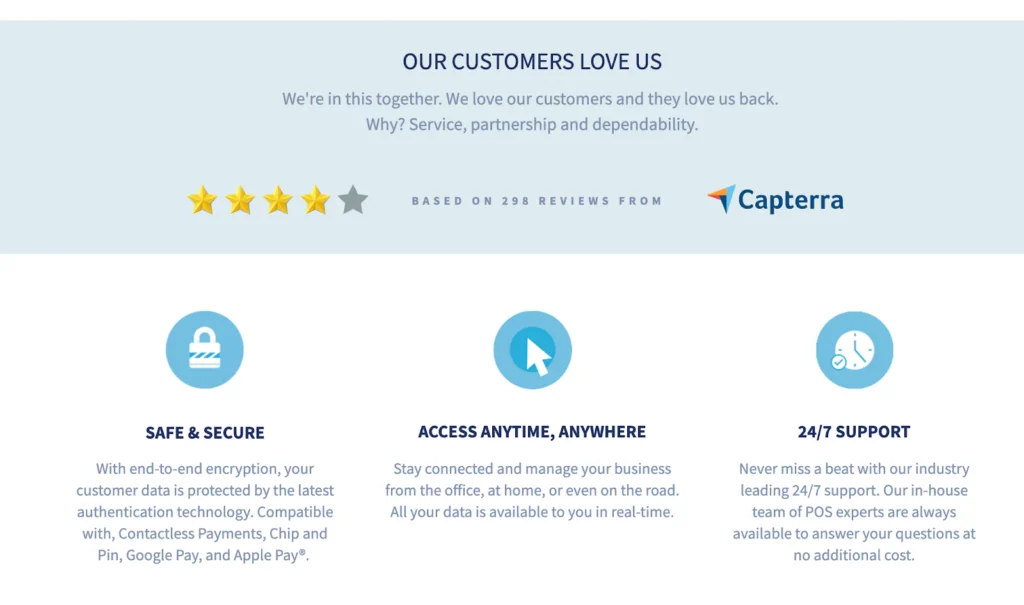
Most buyers have choice paralysis on e-commerce sites. They're terrified to make the wrong choice when faced with many options. Reassure customers with social proof like customer reviews and testimonials.
Positive customer feedback is like a risk forcefield for uncertain buyers. Product reviews boost conversions by 18%. Plugins like Judge.me make adding reviews seamless.
Testimonials from genuine buyers also provide robust social validation. Sprinkle customer quotes that praise your product throughout your site. Video testimonials take it further by putting a face to the feedback.
Reviews and testimonials demonstrate that products work as advertised. Risk-averse customers gain the confidence to click “Buy”.
13 – Reward Loyal Customers
It costs 5X more to acquire new customers vs. retaining existing ones. Instead of endlessly chasing new leads, focus on better serving current customers. Offer loyalty programs and VIP rewards to recognise your best buyers.
Give repeat customers points for purchases that unlock future discounts and freebies. Upgrade big spenders to “elite” member status with special perks like free expedited shipping. Offer members-only sales and early access to new products.
Tools like LoyaltyLion and Smile.io make running e-commerce loyalty programs simple. The more appreciated customers feel, the more they'll keep returning and spending.
14 – Pre-Order Out-of-Stock Products
Being out of stock on a hot product stings. But you can still capitalise on the demand with pre-orders even if an item is back-ordered. Continue taking orders and let people reserve the next batch when it's available again.
Announce when you expect the product to ship based on your reorder timeline. Shoppers are often willing to wait a few weeks to get something popular. Pre-orders let you book revenue instead of losing eager customers.
Pre-orders also build hype and demand for a product re-launch. Shopify and WooCommerce have pre-order plugins to make this a breeze. Don't leave money on the table. Allow people to reserve sought-after items.
15 – Referral Marketing
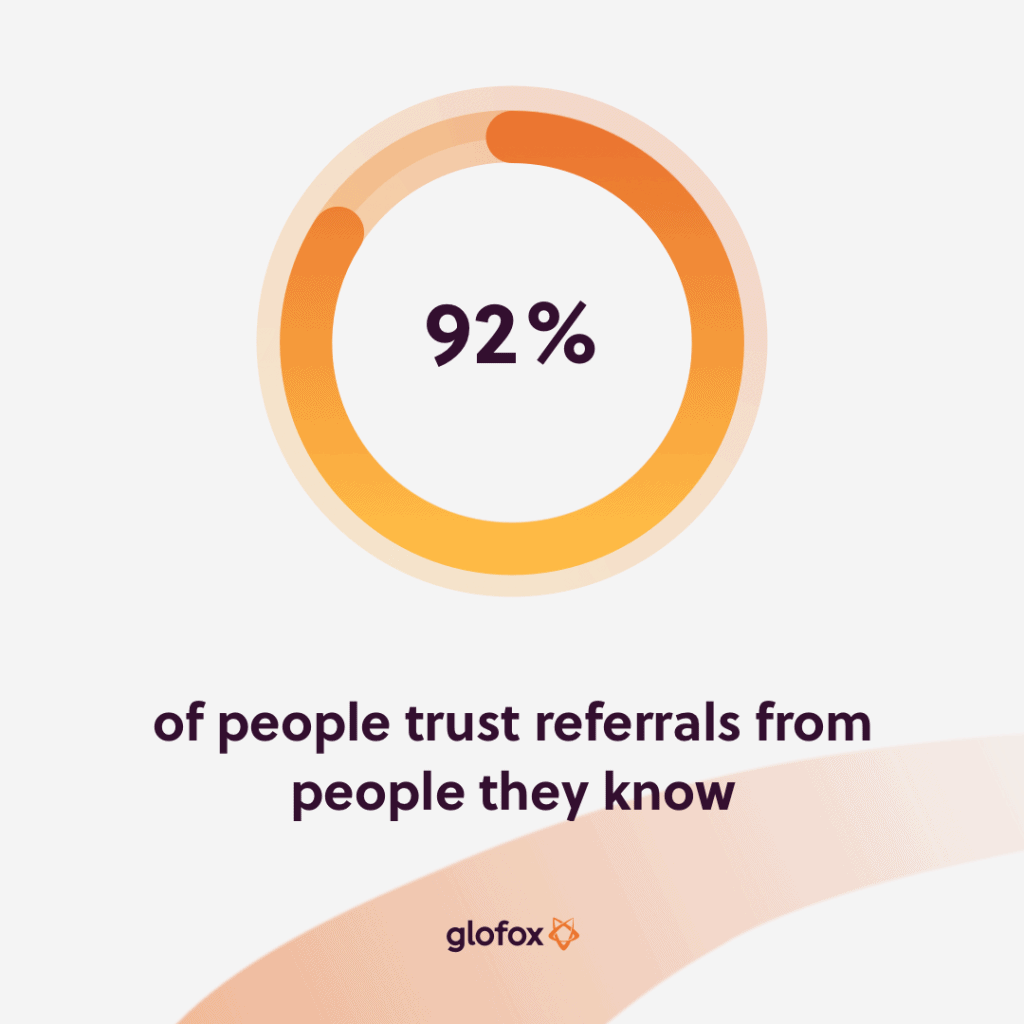
Referral marketing harnesses the power of word-of-mouth. Turn your happiest shoppers into brand ambassadors. The most powerful referral program offers existing customers a discount for sharing your store.
For example, give customers 20% off if they refer a friend who makes a purchase. The friend can get 10% off their first order, too. ReferralCandy and Girafi are two tools to automate referral programs at scale.
Influencers can also drive high-converting referrals when compensated. However, regular customers often convert better because their recommendations feel authentic, not promotional.
Referrals from people buyers know, and trust provide social proof. They're up to 10 times more effective than traditional marketing—Mobilise customer evangelists.
16 – Optimise for Mobile Checkout
Earlier, we discussed optimising for mobile devices. Now, let's talk specifically about closing sales on mobile. Use mobile-friendly simplified checkout pages to reduce friction.
Auto-fill forms, use dropdowns instead of free text fields and make buttons big and CTAs clear. Swipe interfaces, rather than tapping tiny targets, work better on touchscreens. Don't force zooming.
Also, ensure checkout works offline. Spotty mobile connections could cause cart abandonments. Strive for a < 5-second checkout process. Mobile speed and convenience are vital.
Finally, remind people of cross-device purchasing. If they add items on mobile, retarget them on a desktop to complete the order. Omnichannel checkout boosts conversions.
17 – Setup Abandoned Cart Recovery
Abandoned carts are e-commerce's silent killer. Shoppers fill their carts but get distracted and never complete checkout. Recover those lost sales with automated abandoned cart emails.
Email people shortly after they abandon their cart. Remind them of the items left behind and offer a small discount or free shipping to incentivise purchase. Tools like Privy make it easy.
Abandoned cart automation significantly boosts conversions. According to Listrak, it increases recovery rates by 25%. Don't just forget those lost sales. Follow up and turn them into wins.
18 – Highlight Secure Checkout
Trust issues are rampant when buying online. Ease customer doubts by prominently displaying security seals during checkout and calling out encryption, money-back guarantees, and other protection matters.
Visually highlight secure checkout in your messaging. “Checkout safely using 256-bit SSL” or similar language reminds people that their data is protected. Don't assume visitors see the tiny TrustE or McAfee logo.
Security badges from Norton and TrustGuard also increase trust when displayed. Provide contact information for any questions. The more you emphasise safety, the more comfortable people will feel purchasing.
19 – Set Up E-commerce Tracking Links
Understanding your sales funnel requires accurate tracking. Instead of guessing, implement link tracking to see exactly how visitors navigate your site.
Use UTM parameters, Google Tag Manager, or tools like PixelYourSite to add tracking codes easily. Then, see what pages send the most add-to carts vs checkouts in your analytics.
Knowing your sales process metrics allows better optimisation. See where people enter and exit your site. Identify pages causing friction leading to abandonment. Tracking gives you visibility.
You can't improve what you can't measure. Detailed tracking provides the data to pinpoint quick fixes and optimise user flows.
20 – Review Page Speed Metrics

Hopefully, you have already optimised page speed. But optimisation is ongoing. Monitor your site's performance using PageSpeed Insights and Pingdom to catch issues.
Study your site analytics to identify pages with high exit rates. Correlate exits with slow load times. Sort pages by speed to audit the slowest ones first. Are images unoptimised? Is the web host underpowered?
Pay attention to changes over time. If a page goes from sub-2 second load times to 3 seconds, something needs to be fixed. Stay vigilant to maintain speed. Performance naturally degrades without maintenance.
Speed is the foundation of conversion and SEO. Regularly confirm that your pages load quickly from multiple regions and devices. Fast sites make more money.
21 – Make Buying Easy
Every extra click and swipe required to buy decreases conversions. Look for opportunities to reduce buying friction with minor tweaks further:
- Auto-select default shipping and payment options
- Floating cart sidebar so it's always visible
- Smart predictive search
- Guest checkout
- 1-page / modal checkout
- Pre-filled customer and payment data
- Click-to-call support buttons
- Persistent carts across devices
- Apple/Google Pay
Go through your buying process and eliminate pain points. Too many steps cause cart abandonment. Remove unnecessary hurdles that add friction without value.
The best conversion comes from happy accidents. Delight customers by making purchases fast, easy, and thoughtless.
22 – Offer Multipack Discounts
The more someone buys, the more they save. Encourage larger order sizes with discounts for purchasing multiple products. Offer deals like:
- Buy 2, get 10% off
- Buy 3, get 20% off
- Buy 5, get one free
Giving savings for bundled purchases incentivises bigger baskets. Even adding small items becomes worthwhile to reach the next discount tier. Upsell customers naturally this way.
Make sure your profit margins allow room for bulk discounts. Avoid giving too much away. But the right multipack promotions lift sales and order value. Bundle, baby!
23 – Send Post-Purchase Surveys
Understanding why buyers purchased gets you more of those coveted customers. Post-purchase surveys provide this insight directly from the source. Ask a few quick questions like:
- Why did you buy from us?
- How did you hear about our store?
- What convinced you to purchase?
- Would you shop with us again?
Keep surveys concise with no more than 5-7 questions. Offer an incentive like a discount code or sweepstakes entry to increase responses.
Use survey results to fine-tune your marketing and messaging—more of what works, less of what doesn't. Buyer feedback is marketing gold.
Surveys diagnose your sales funnels and highlight areas for improvement. The customer's voice is the ultimate authority.
24 – Research Competitors
Knowing competitors' strengths and weaknesses gives you an edge. Analyse what other popular sites in your niche do well and where they fall short. Sign up for their emails and study their funnels.
How do competitors present product information? What special offers do they promote? Note compelling copy and design you can ethically swipe.
Also, pay attention to pain points like clunky checkouts, lack of reviews, low stock levels, or too few payment options. Improve on their flaws while implementing their strengths.
Competitive analysis prevents you from leaving money on the table. Match (or exceed) the best of what's already working, then do the rest even better.
25 – Add New Payment Options
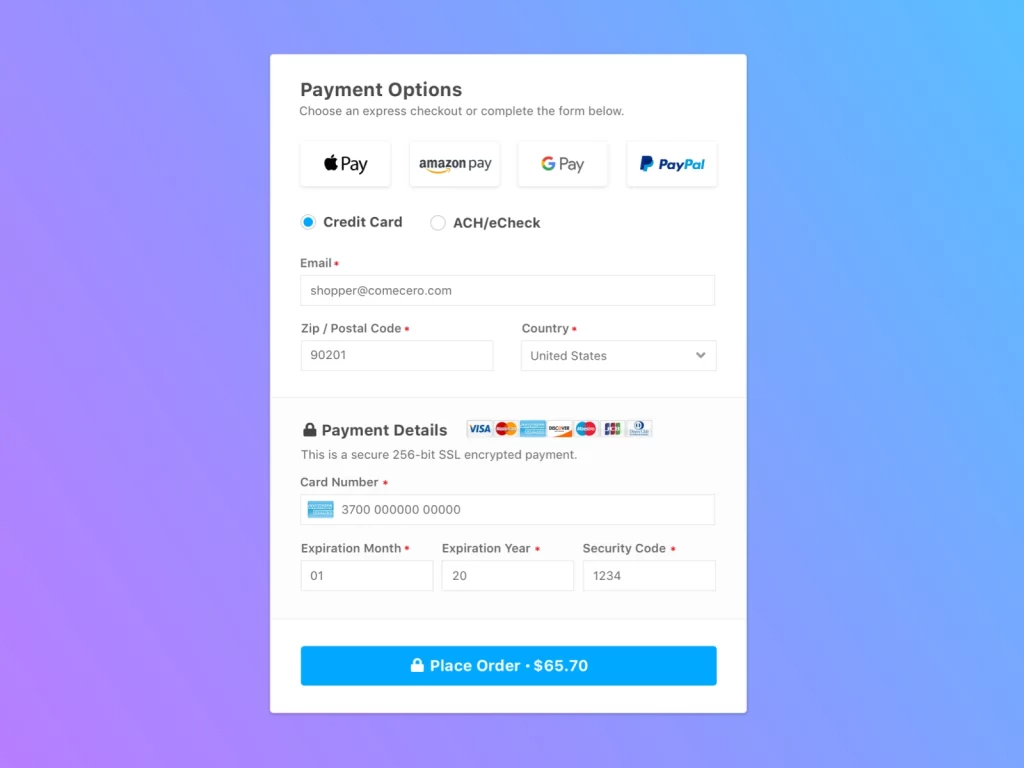
The more payment methods you support, the more customers can quickly pay you. Don't limit options just to credit cards and PayPal. Add support for as many providers as possible:
- Apple Pay
- Google Pay
- Amazon Pay
- Klarna
- Affirm
- Cryptocurrencies
- Local payment gateways for international buyers
Optimise your checkout flow for each new payment method. Make options visible, easy to use, and communicate how they work.
Local payment options are crucial for international conversions. Provide familiar purchasing methods for each target market.
Give customers a choice in how they pay. More options increase completed checkouts. Only requiring a single payment provider leaves money on the table. Support diversity.
26 – Email Retention Campaigns
Winning new customers costs far more than keeping existing ones. Launch retention campaigns to re-engage lapsed customers with personalised emails like:
- Cart abandonment reminders
- Loyalty coupons for repeat purchases
- Soliciting product reviews
- Surveys asking why they haven't purchased
- Re-introducing your brand
Lapsed buyers often still like you but simply forgot about your store. Follow up and lightly nurture them back into the fold. Even if only a tiny percentage reactivate, it pays dividends.
Retention drives profits. Small efforts to win back disengaged customers offer colossal ROI compared to new lead acquisition. Keep talking to buyers post-purchase.
27 – Politely Ask for Reviews
Positive product reviews build trust and social proof for new buyers. But customers rarely leave them without being asked. Proactively request reviews from happy customers.
Send a friendly email after a purchase asking if they're satisfied with the product and open to leaving an honest review. The feedback helps other buyers have confidence in purchasing.
You can even offer incentives in exchange for reviews like discounts, sweepstakes entries, or loyalty points. Just make sure to follow the review platform guidelines. A little motivation doesn't hurt.
The worst that happens is someone says no. The best is that you get more high-quality social validation driving conversions. Just ask!
28 – Install Live Chat

Live chat provides real-time assistance when shoppers need it. If someone is wavering on a purchase, chat gives you an instant chance to answer questions and finalise the sale.
Let visitors know chat is available by displaying a desktop notification icon and declaring “Live support online”. Popping open the chat box is their call to action.
When they engage, identify needs and share links to relevant products and content. Be friendly and helpful. Humanising your brand with chat builds trust.
Many free live chat tools like Drift and Intercom seamlessly integrate with e-commerce stores. Real-time sales support works.
29 – Create Discount Coupon Codes
Everyone loves coupons. Offer discount coupon codes to incentivise purchases and encourage more significant order values. Codes make people feel like savvy shoppers scoring a deal.
New customers always appreciate 10% off their first order. You can create codes for:
- X% off a single item
- X% off an entire order
- Free shipping
- Buy X, get Y free
- $X off any order over $X
Discount codes also help with promotions like holiday sales. The more you structure them as temporary steals, the better. Sweet coupon savings lead to sweeter sales.
30 – Highlight Fast Shipping
81% of customers want their orders ASAP. Faster shipping results in higher conversions. Boldly advertise quick shipping timelines and options:
- Same-day delivery
- Next day delivery
- 2-day shipping
- Overnight shipping
Calling out fast shipping eases doubts and decisions during checkout. People will pay extra for express shipping, which gets purchases to them quicker.
Be transparent with shipping expectations. Underpromise and overdeliver. Getting items to customers sooner than estimated further bolsters your store's reliability.
31 – Add User Ratings and Reviews
If you haven't yet, it's past time to add user-generated ratings and reviews. Customers want to make informed buying decisions before purchasing. Reviews provide social proof that a product is high-quality and worth the investment.
Display star ratings and customer reviews, including images and videos, if possible, on each product page. Positive experiences from past genuine buyers are marketing gold. A single good review can boost conversions by 10% on average.
Make leaving reviews easy with comment boxes and prompt email requests. The more reviews you accumulate, the more each additional one builds exponential trust. Let customers sell for you.
32 – Create Shopping Ads
Google Shopping ads highlight your products when people search for relevant buyable items. Unlike standard text ads, shopping ads prominently showcase images, prices, ratings, and other product details.
Shopping ads get your products directly in the consideration set during active buying searches. People can click through to view more details or add the item to their cart with one tap.
These ads work with Google Merchant Center feeds. Make sure you have a properly structured and updated product data feed. Then, let your items get featured in search and YouTube browse features.
The tight targeting and highly-visible format make shopping ads a winner for e-commerce. Get your products in front of motivated buyers as they actively browse.
33 – Send Cart Abandonment Reminders
Abandoned carts make up the majority of e-commerce revenue loss. Shoppers fill their carts but get distracted and never complete checkout. Follow up with timely and relevant emails.
First, set your initial reminder email to go out within 1-4 hours post-abandonment. Any longer, and the trail goes cold. Offer a small discount or free shipping to nudge them back.
If there is no response, send a second reminder 2-3 days later. Add or change up incentives while politely asking what's causing hesitation in a customer survey.
Finally, drop one last reminder 5-7 days before closing the loop. Every extra nudge lifts recovery rates. Don't just accept abandoned carts as a write-off.
34 – Create Content, Earn Links

Quality content attracts organic search traffic, builds authority, and earns backlinks. Put effort into creating handy guides and resources related to your e-commerce niche.
For example, write comparison posts and buying guides so customers can make more informed purchasing decisions. How-to articles and expert advice also provide value.
Promote your content through social media, email, and paid ads. The more readers you drive, the more links you can earn. Produce regular informational content that people want to reference on their sites.
Leverage influencers by contributing guest posts to relevant blogs. Don't go for hard sales. Focus on being helpful. Great content opens the door to organic growth.
35 – Analyse Your Website Traffic
Carefully analyse where your website traffic comes from using Google Analytics. This reveals high-impact traffic sources to maximise along with wasteful channels to cut.
Key things to review:
- Paid vs organic vs referral traffic
- Most visited pages
- Top traffic sources
- Geographic distribution
- Device Split
- Exit pages
Traffic insights show you exactly how people discover your store. Double down on what converts and eliminate what doesn't. Track success over time connected to marketing efforts.
Traffic analysis provides a clear roadmap to your most promising sources of qualified visitors. Use it to drive more sales.
36 – Retarget Customers on Social Media
Set up retargeting ads on Facebook, Instagram, Pinterest, and other social media platforms. Remarket to shoppers who are already engaged with your site or products.
For example, if someone views a product page but doesn't add it to their cart, later show them an ad highlighting that exact item. The familiarity creates low-hanging relevancy.
You can also create custom audiences on Facebook based on site engagement. Retarget people who visited key pages but didn't convert. Stay top of mind.
Remarketing works because it isn't overly intrusive. You're simply reminding people of something already on their radar. Make it easy for them to rediscover you.
37 – Review Your Site Analytics Frequently
This deserves repeating. Regularly reviewing your website analytics provides the most critical e-commerce insights. Don't just set it and forget it.
Analyse key conversion and traffic metrics at least once per week. Look at micro-conversions leading to purchases like product page views, cart adds, etc.
Track monthly and YoY trends. How have conversions changed over time? Which marketing channels drive the most revenue? Where are gains being made and losses occurring?
Business intelligence is useless without frequent analysis. Don't let the numbers sit idle. Translating analytics into action is how you win.
38 – Optimise for Long-Tail Keywords
Targeting super high-competition keywords is an uphill battle. Instead, focus your SEO on location- and subject-specific long-tail keywords.
For example, don't just optimise for “shoes”. Go after phrases like “black running shoes wide width”. The more precise the searcher's intent, the better chance you have a ranking.
Perform keyword research using SEMRush, Ahrefs, and Google's Keyword Planner. Find buyer keywords with exact product relevance and decent volume.
Creating content around long-tail terms also improves the chances of ranking. Optimise pages and posts for tightly focused keywords. This strategy consistently works.
39 – Add User-Generated Content
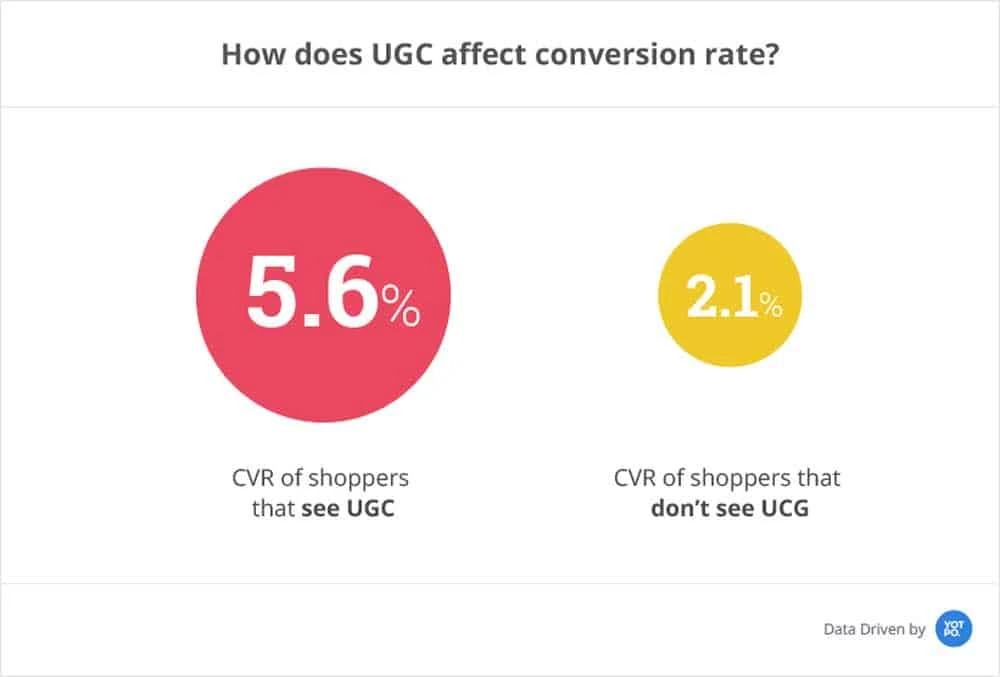
User-generated content like customer photos and videos adds authenticity that sterile stock imagery can't touch. Get permission and re-share UGC highlighting your products.
For example, curate and display Instagram posts from happy customers enjoying your goods. Visual UGC builds a sense of community that feels “real” vs manufactured.
Shoppable image galleries, customer testimonials, ratings, reviews, and usage stories are impactful UGC. The biggest e-commerce giants rely heavily on harnessed word-of-mouth.
User content builds trust and provides social proof. It humanises your brand in an organic way that overt marketing can't.
40 – Give Sneak Peeks of New Products
Build anticipation for a new product drop by giving sneak peeks before the launch. Post teaser images and videos on social media hinting at the upcoming release.
Offer readers on your email list an exclusive “first look” to make them feel unique and valued. Let influencers share sneak previews to get people excited.
The goal is to create intrigue and demand before the product is available for purchase. Reward loyal followers with VIP early access for additional excitement.
Buzz marketing campaigns amplify launch success. A steady drip of pre-release teasers gets customers primed and ready to buy immediately.
41 – Run Limited-Time Sitewide Sales
Sweeten the pot by offering rare sitewide sales for extra urgency. Instead of just discounting a few products, lower prices storewide for a limited time.
Big sales early on help you rapidly acquire customers eager for deals. You can progressively decrease sale frequency later to avoid conditioning buyers to wait for discounts.
Holiday weekends, anniversaries, end-of-financial quarters, and product launches are all prime times to offer significant sales. Just don't overdo it to protect margins.
Sitewide sales spike revenues by incentivising larger order sizes. People love snapping up bargains in bulk. Give them exciting opportunities to do so.
42 – Reward Loyalty with VIP Access
Loyalty programs retain customers, but they work even better when top buyers get VIP treatment. Upgrade frequent shoppers to elite status with exclusive rewards:
- First access to new arrivals
- Special members-only sales -free expedited shipping
- extended return windows
- sneak peeks and pre-orders
Make high spenders feel like celebrities. Give them special status, discounts, and privileges that delight and recognise their value. VIP perks turn customers into lifelong brand devotees.
43 – Segment Your Email Lists
Do you send the same emails to every subscriber? Don't make that rookie mistake. The money is in targeted email segmentation. Separate your list into groups with unique value propositions:
- New subscribers
- Referred customers
- Loyalty program members
- Repeat buyers
- Engaged subscribers
- Lapsed customers
Create customised email journeys for each segment. Send relevant content and special offers based on subscriber behaviour and preferences. Hyper-targeted emails increase engagement, clicks and conversion rates. Treat different customers differently.
44 – Advertise on Pinterest
Crafty online shoppers have flocked to Pinterest's inspiring visual platform. Placement on relevant Product Pins exposes your goods to buyers actively searching.
Promote your most photogenic products on Product Pins to drive traffic. Optimise pin descriptions for SEO, including your site link. Curate eye-catching product boards in your niche.
You can also sponsor pins to boost the visibility of your items and store. Pinterest's audience contains buyers ready to discover and purchase visually appealing goods. Get your products pinned.
45 – Experiment with Messenger Marketing
Messenger apps like Facebook Messenger, WhatsApp and WeChat are exploding. Billions of eyeballs now live inside messaging platforms.
Try using Messenger to engage customers:
- Establish an official brand bot
- Share promo codes and launch updates
- Send order and delivery notifications
- Abandoned cart reminders
- Provide customer support
Messenger opens new doors for conversational marketing. The more channels you use to connect with customers, the stronger your relationship becomes. Meet buyers where they already spend time.
46 – Geotarget Local Customers
Local customers within driving distance of your store are excellent prospects for higher lifetime value—target nearby shoppers with geofencing digital ads.
Place geofences around your physical store location to target nearby locals with ads for in-store pickup, limited-time promotions, and physical product previews.
Geotargeting helps omni-channel merchants connect online and offline efforts. Personalising for locals differentiates you from faceless national brands. Meet neighbourhood shoppers wherever they go online.
Targeted local outreach also facilitates word-of-mouth marketing. Delight local shoppers, and you gain brand ambassadors on your doorstep.
47 – Follow Up Post-Sale
The marketing relationship doesn't end after someone purchases from you. Follow up with customers post-sale to continue nurturing the relationship.
Email customers a few days after delivery to ensure they're satisfied. Ask permission to use feedback or photos in your marketing. Surprise them with a coupon for their next purchase.
Follow up again after a few weeks to check on how they're enjoying the product. Or to remind them of complementary items they may need to restock soon based on their past purchase data.
Post-sale outreach prevents falling out of sight and mind after the first purchase. Keep providing value on an ongoing basis. The best marketing is post-sale.
E-Commerce Wins FAQs
Here are some frequently asked questions about generating quick wins in e-commerce:
What are some quick wins for e-commerce sites?
Some quick wins include optimising mobile and page speed, adding trust symbols like security badges and testimonials, offering free shipping or limited-time discounts, retargeting previous site visitors, sending abandoned cart reminders, and collecting email addresses to retain customers.
How can you quickly increase e-commerce sales?
Quick ways to increase e-commerce sales include improving site conversions, running sitewide sales and promotions, advertising on social platforms like Facebook and Instagram, sending cart abandonment recovery emails, adding live chat support, and offering coupon codes and other special discounts.
What data should e-commerce stores monitor for quick wins?
Important e-commerce data to monitor includes website traffic sources, site speed metrics, on-site search terms, product page views, add-to-cart and checkout rates, payment failure rates, and post-purchase metrics like returns. This data reveals optimisation opportunities.
Conclusion
E-commerce success doesn't happen overnight. Consistent execution over an extended timeframe is ultimately how brands are built. But in the short term, you can enjoy quick wins using innovative growth hacking tactics.
Little optimisations like improving site speed, offering free shipping, sending abandoned cart reminders, and running limited-time sales add significant revenue bumps. With the right strategies, gains come quickly.
Keep innovating and testing new tactics to unlock shortcuts to success. Momentum fuels motivation to keep pushing forward. Build on small victories early, and growth follows.
The strategies outlined in this article will rapidly grow your e-commerce sales, conversions, and customer base. Pick a few quick wins to implement this week that align with your strengths and existing assets. Build from there.
Slow and steady might win some races. But speed kills in the fast-paced world of online business. Step on the gas with quick optimisations to pull away from competitors. The race for e-commerce glory awaits. Let's win it together!
